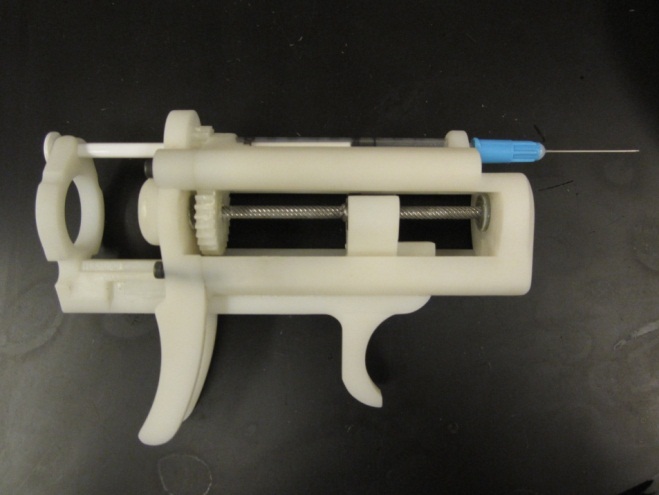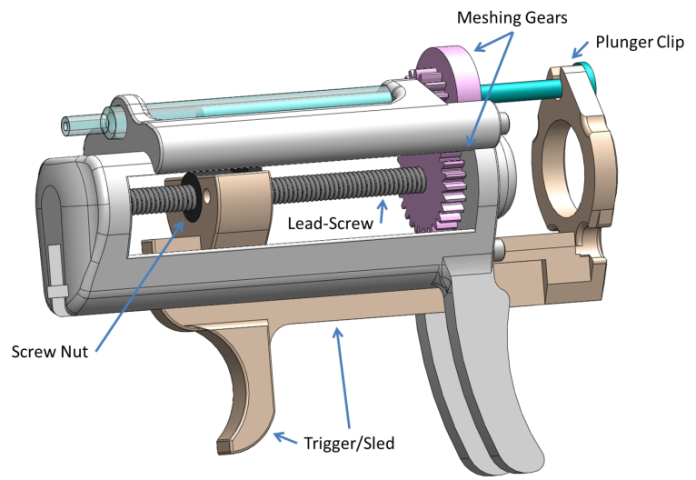Improving Fine Needle Aspiration
Fine Needle Aspiration Device
- Problem: Thyroid Fine Needle Aspirations(FNA) resulting in inconclusive or Non-diagnostic conclusions
- 400,000 thyroid FNA biopsies in the U.S. annually.
- Multiple repeat FNA procedures are performed.
- Doctors must sometimes resort to core biopsies and surgery as diagnostic tests.
- 10-20% of FNAs are non-diagnostic.
- Over 95% thyroids diagnosed as non-diagnostic and surgically removed are found to be benign.
- 20-30% are inconclusive.
- Over 80% thyroids diagnosed as inconclusive and surgically removed are found to be benign.
- Goal: Increase diagnostic success rate for fine needle aspiration.
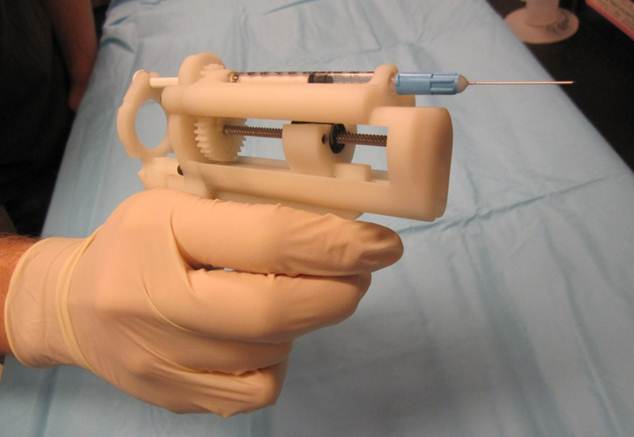
Approach
- Key Design Requirements:
- Increase Cell Yield - to improve diagnostic success rate.
- Fit and Ease of Use - the device should be easy to use, light and ergonomic.
- Single Hand Use - so that physicians can hold the ultrasound probe with the other hand.
- Current Standard - safe, visible under unltrasound, and viable for different sized thyroids.
- Three Part Solution
- Needle - improve material uptake
- Stylet - help with insertion and decrease loss of diagnostic cells
- Syringe Pistol - control needle movement
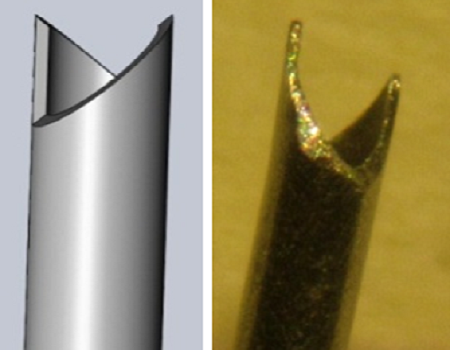
Needle Design
- Two tooth design that digs into the tissue when rotated.
- Needle tips are offset so that tissue is guided in instead of shearing along a single plane and deflecting around the needle as in the single bevel needle.
- Incorporates sharp vertical (parallel to the needle) edges to shear cells from surrounding tissue when the needle is rotated.
- Volume of the needle is increased by extending the needle into the hub and using extra thin wall tubing.
- Manufacturing
- Quick, two cut process to manufacture the basic two needle tips.
- Each tip was cut on a diamond grinding disk.
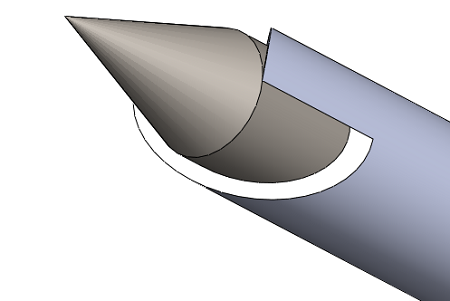
Stylet
- Provides additional strength and rigidity to the needle during insertion.
- Prevents muscle, skin and other undesirable tissue from clogging the needle as it is guided to the nodule.
- Sharpened conical tip minimizes tip deflection and helps reduce insertion force.
- The stylet is retracted from the extra-long needle in such a way as to remain partially in the needle even when fully retracted.
- Prevents the sample from escaping and becoming stuck in the hub and syringe.
- Helps push the collected material out onto the slide.
Syringe Pistol
- Three concurrent actions when the trigger is pulled
- Stylet Retraction - exposes the needle tip and provides room for the collected material.
- Rotation - the needle is rotated to dig into the tissue.
- Suction - the syringe plunger is pulled back to create suction and pull material in.
- Once the needle is removed from the body, the material can be quickly expelled onto the slide by pushing on the back fo the device.
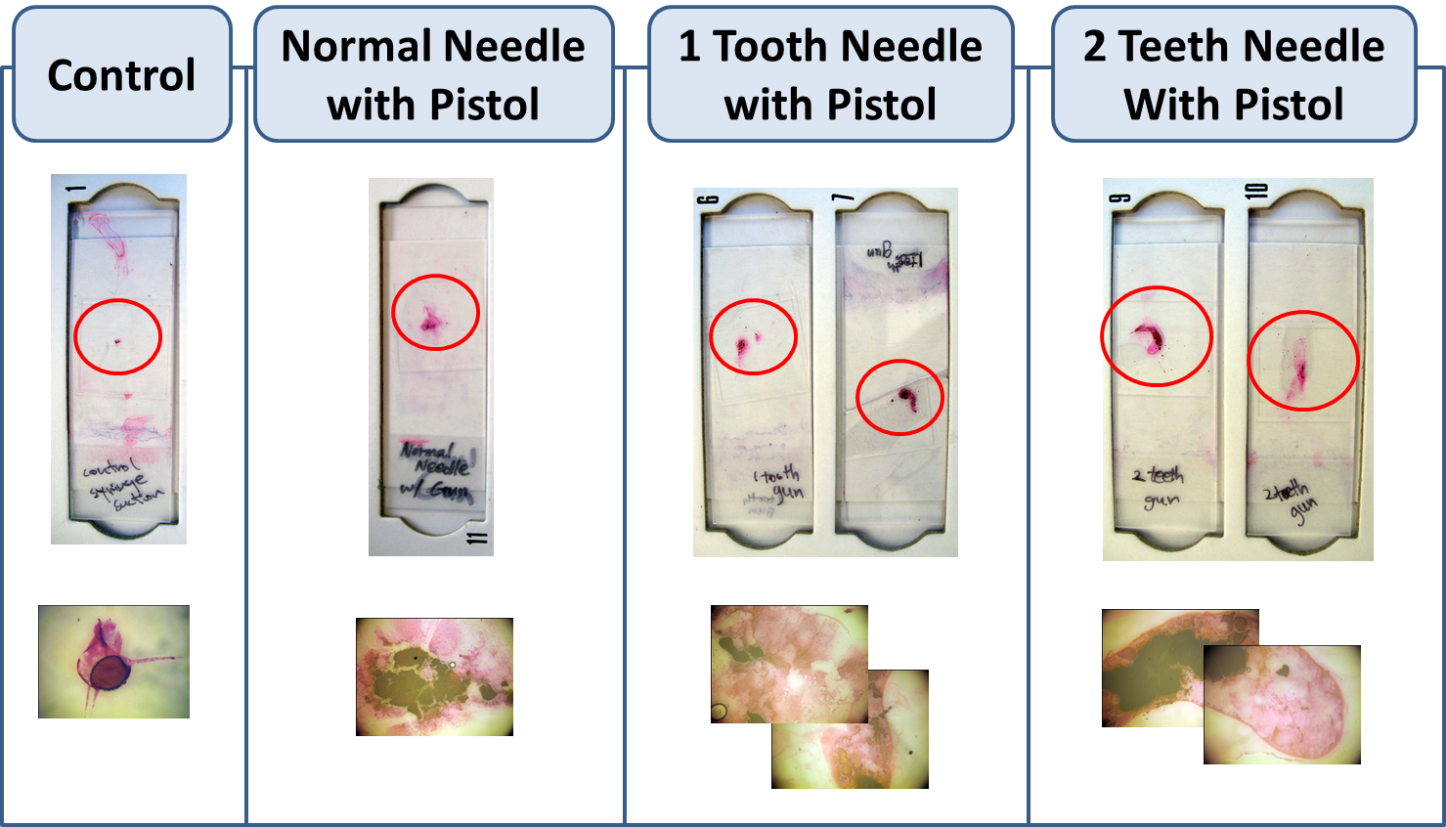
Testing
- The two toothed needles were compared to the standard bevel tip needles and additional single toothed needles that were made.
- A surgeon performed fine needle aspiration on mice livers at MGH and the resulting slides were analyzed by an experienced cytopathologist.
- The sample collected by the single-toothed or double-toothed needles was visibly larger than that of the control
- The integrated intensity of the sample increased threefolds when the single-toothed needle was used, and up to seven times when the double-toothed needle was used.
- Overall, while the initial pistol and needle showed preliminary signs of qualitative success, further work is necessary to optimize the product.
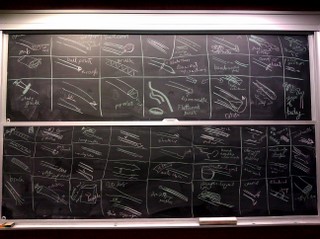
Future Work
- Find the optimal characteristics for features such as wall thickness, rotation rate, and number of teeth.
- Create a more refined manufacturing process.
- A rigorous scientific study to determine the effectiveness of the syring pistol and needle.
- Determine what other applications exist for this technology.
